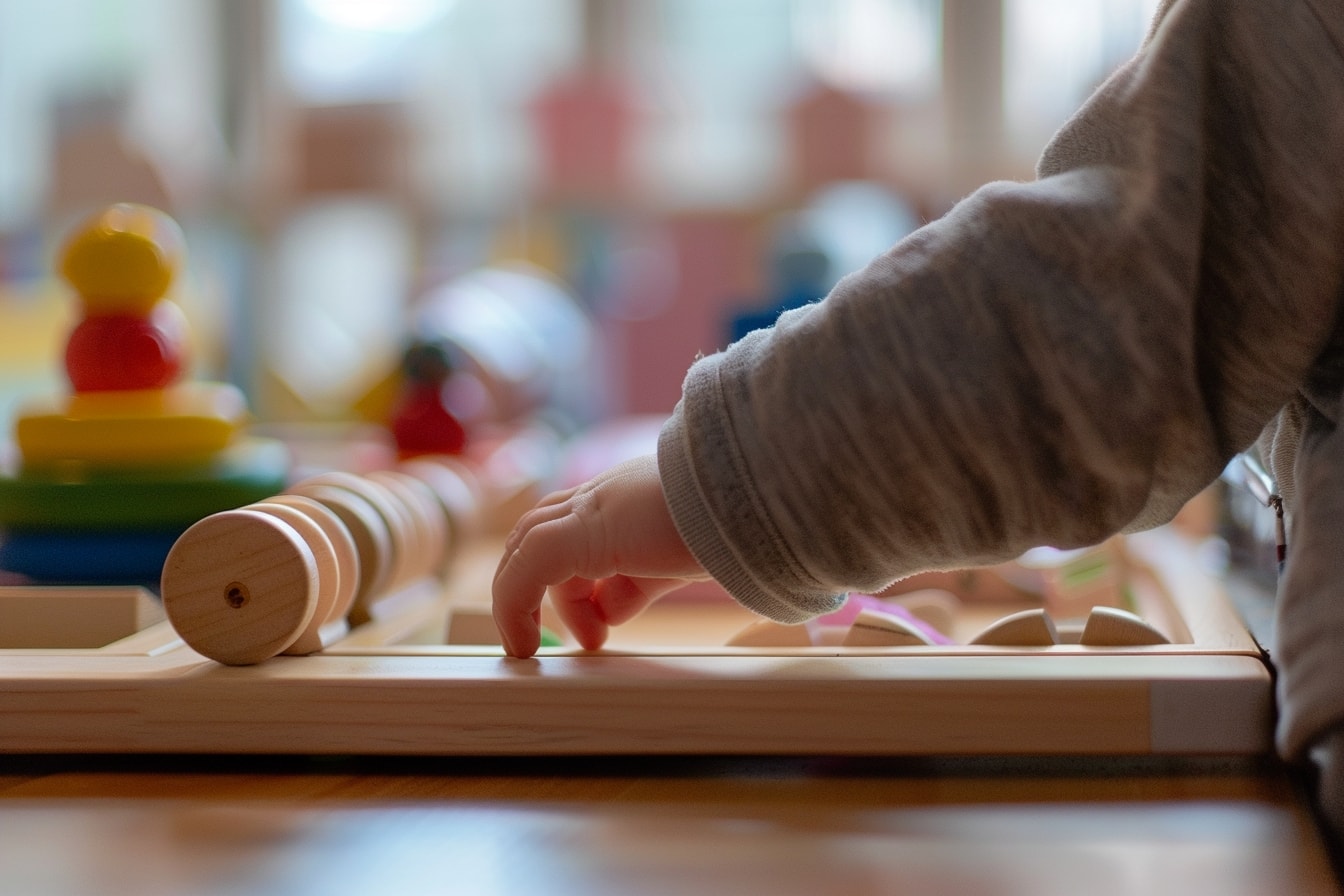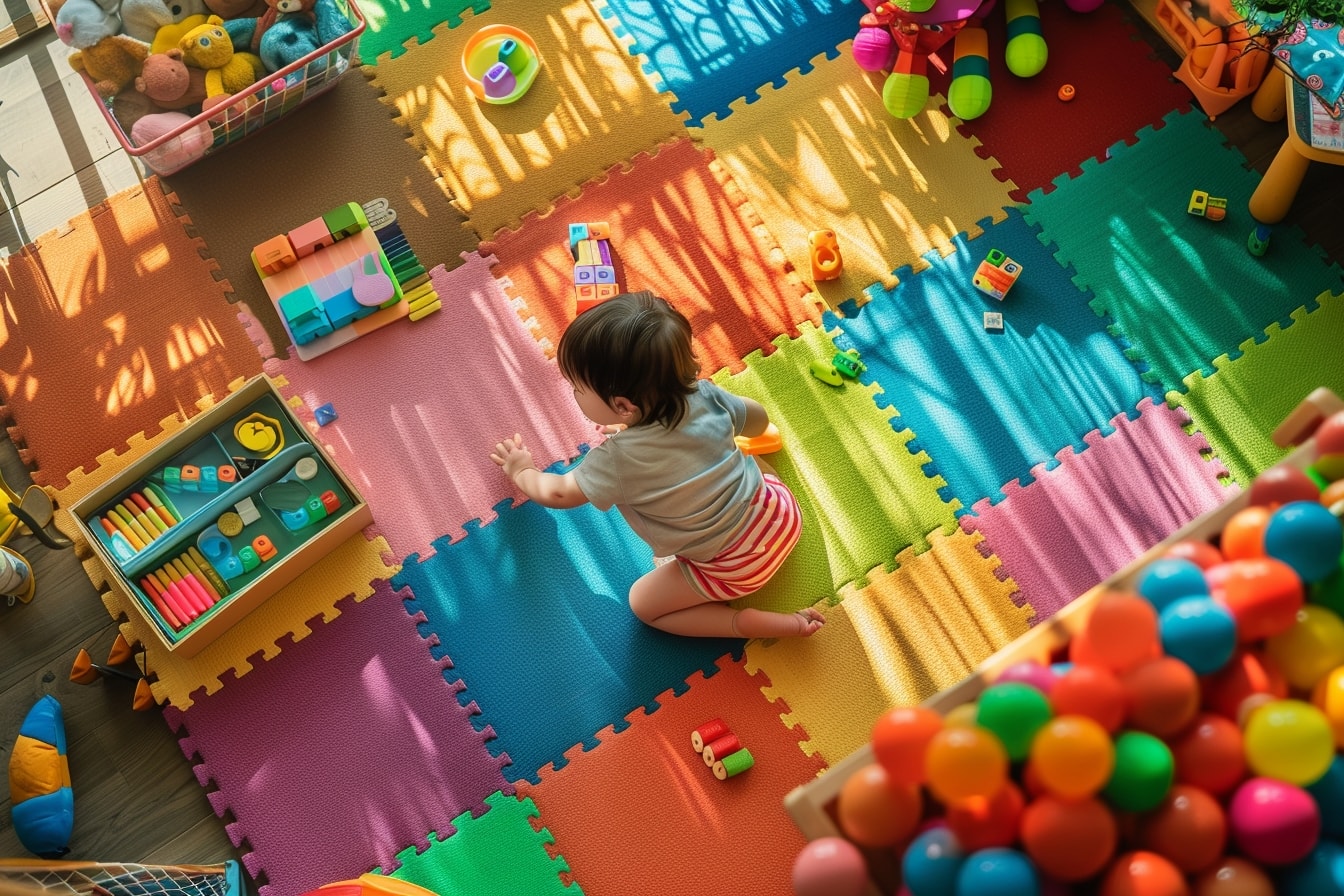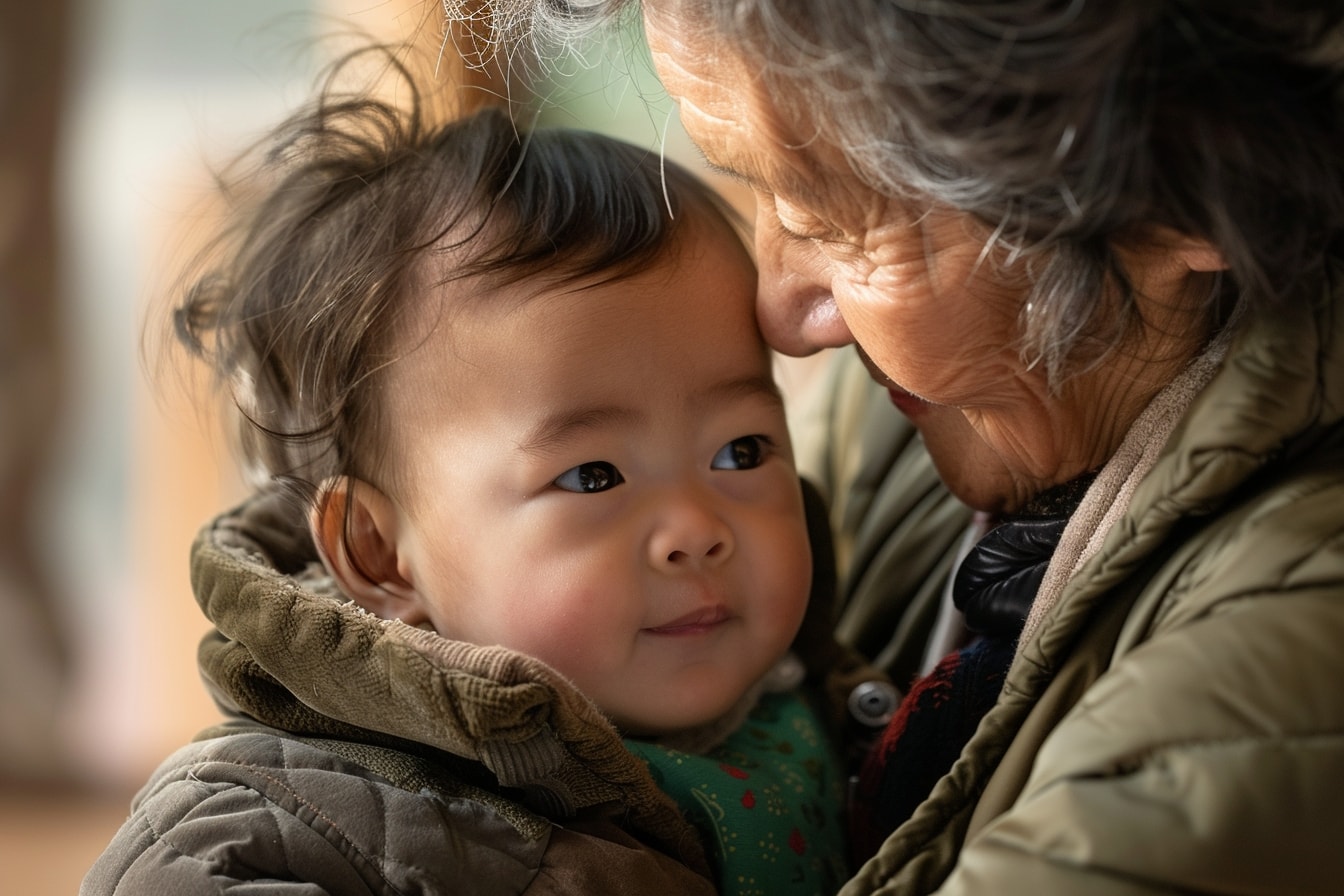Table of Contents
ToggleUnlocking Potential: Nurturing Montessori Sensitive Periods in Infant Development
Picture this: you’re sitting with your newborn in your arms, marveling at every tiny movement and expression. As a parent, you’re keenly aware of the rapid pace of development during the early months of your child’s life. But did you know that amidst those adorable coos and wiggles, your infant is undergoing a series of remarkable phases known as Montessori sensitive periods?
Montessori sensitive periods, as coined by the renowned educator Maria Montessori, are critical windows of opportunity during which children are particularly receptive to specific stimuli and experiences. These periods, ranging from sensory exploration to language acquisition, play a pivotal role in laying the foundation for lifelong learning and development.
Now, you might be wondering, what sets Montessori sensitive periods apart from typical developmental milestones? The answer lies in their intensity and specificity. Unlike broad developmental stages, sensitive periods are characterized by a laser focus on particular areas of growth, driving infants to voraciously absorb information and master new skills.
For parents, understanding and harnessing these sensitive periods can be a game-changer in supporting their child’s holistic development. Whether you’re a first-time parent or a seasoned caregiver, embracing the principles of Montessori education opens up a world of possibilities for nurturing your little one’s potential.
In this article, we’ll embark on a journey through the fascinating landscape of Montessori sensitive periods, exploring their significance within the context of infant development. From sensory exploration to social-emotional growth, we’ll delve into each phase with a Caribbean cultural lens, uncovering how cultural practices and traditions intersect with Montessori principles.
So, buckle up and get ready to unlock the potential within your child as we unravel the mysteries of Montessori sensitive periods. By the end of this journey, you’ll be equipped with actionable insights and practical tips to cultivate a nurturing environment that honors your child’s unique developmental needs.

Discovering the Sensitive Periods
Welcome to the heart of Montessori education – the discovery of sensitive periods. These remarkable phases, as observed by Maria Montessori, are like hidden treasures waiting to be unearthed within every child. Let’s embark on a journey of understanding and appreciation for these critical windows of opportunity.
First and foremost, what exactly are sensitive periods? Imagine them as magical gateways through which children pass, each leading to a realm of heightened receptivity and rapid growth. During these periods, children display an insatiable curiosity and an uncanny ability to absorb knowledge effortlessly.
But here’s the kicker – sensitive periods aren’t just about generic developmental milestones. They’re incredibly precise and targeted, focusing intensely on specific areas of learning. From the sensitive period for sensory exploration to the one for language acquisition, each phase is uniquely tailored to propel children towards mastery.
Let’s break it down further. The sensitive period for sensory exploration, for instance, is a time when infants are magnetically drawn to stimuli that engage their senses. From the soft touch of a caregiver’s hand to the vibrant colors of a mobile, every sensation becomes a source of wonder and fascination.
Similarly, the sensitive period for language acquisition is a marvel to behold. During this phase, children soak up language like sponges, effortlessly absorbing vocabulary and syntax through exposure and interaction. It’s as if their minds are wired to decipher the complexities of language with astonishing ease.
Now, you might be wondering – why are these sensitive periods so crucial? Well, they lay the groundwork for all future learning and development. By tapping into these windows of opportunity, parents and educators can provide the ideal environment for children to thrive.
But here’s the beauty of it – sensitive periods aren’t confined to the classroom or structured learning environments. They permeate every aspect of a child’s life, from the cozy confines of home to the bustling streets of the community. Everywhere a child goes, opportunities for growth abound.
So, as we delve deeper into the realm of Montessori sensitive periods, keep an open mind and a keen eye for the magic unfolding before you. Together, let’s embark on a journey of discovery and wonder, honoring the innate potential within every child.

Navigating Sensory Exploration
Get ready to embark on a sensory adventure like no other as we dive into the mesmerizing world of sensory exploration. From the gentle rustle of palm trees to the tantalizing aroma of Caribbean spices, every sensation becomes a gateway to discovery for your little one.
Now, you might be wondering – why is sensory exploration so important during infancy? Well, it’s more than just a way to keep your baby entertained. Sensory experiences lay the foundation for cognitive development, fine-tune motor skills, and foster emotional well-being.
So, how can we navigate this sensory wonderland and create an environment that stimulates and delights? Let’s start with the basics.
- Engage all the senses: From sight and touch to taste and smell, incorporate a variety of sensory stimuli into your child’s daily routine. Take them on a sensory scavenger hunt through the vibrant colors of fruits and vegetables or the soothing textures of Caribbean fabrics.
- Create a sensory-rich environment: Transform your home into a haven of sensory delights with simple yet effective additions. Hang wind chimes by the window to capture the melody of the breeze, or set up a cozy corner filled with soft pillows and plush toys for tactile exploration.
- Encourage hands-on exploration: Provide opportunities for your baby to interact with their environment through hands-on activities. Set up a sensory bin filled with rice or sand for tactile play, or introduce them to a variety of musical instruments for auditory stimulation.
- Embrace nature’s wonders: Take advantage of the natural beauty that surrounds you in the Caribbean. Explore the sandy beaches, lush rainforests, and crystal-clear waters, allowing your child to connect with the sights, sounds, and textures of the world around them.
But sensory exploration isn’t just about external stimuli – it’s also about fostering a deep connection between parent and child. So, don’t be afraid to get down on the floor and join in the fun. Engage in sensory play together, whether it’s squishing playdough between your fingers or splashing in a puddle after a tropical rain shower.
Remember, every moment of sensory exploration is an opportunity for growth and discovery. So, let your child’s senses be their guide as they navigate the rich tapestry of the Caribbean and beyond.

Fostering Language Acquisition
Prepare to embark on a linguistic journey as we explore the captivating world of language acquisition. From the lilting melodies of Caribbean dialects to the rhythmic cadence of storytelling, language holds the key to unlocking your child’s communicative potential.
But what exactly does language acquisition entail, and why is it so crucial during infancy? Well, my dear readers, language acquisition is more than just learning words and grammar – it’s about forging connections, expressing emotions, and understanding the world around us.
So, how can we foster this intricate dance of words and meanings in our little ones? Let’s dive into the depths of language acquisition and discover how we can nurture this essential skill.
- Immerse your child in language: Surround your child with rich and diverse language experiences from the moment they enter the world. Engage in conversations, sing songs, and read stories aloud in both English and your native Caribbean language to expose them to different linguistic patterns and structures.
- Make language meaningful: Encourage meaningful interactions that allow your child to connect words with their real-world experiences. Describe the sights and sounds of everyday life, narrate your actions as you go about your day, and respond attentively to your child’s attempts at communication.
- Provide a language-rich environment: Create a language-rich environment at home filled with books, music, and interactive toys that promote language development. Set up a cozy reading nook stocked with colorful picture books featuring Caribbean culture and traditions, or play educational games that introduce vocabulary and concepts in a fun and engaging way.
- Celebrate bilingualism: If you speak multiple languages in your household, embrace the beauty of bilingualism and encourage your child to become fluent in both English and your native Caribbean language. Bilingualism not only enhances cognitive skills but also fosters a strong sense of cultural identity and pride.
But fostering language acquisition isn’t just about teaching your child to speak – it’s also about instilling a love of language and communication that will last a lifetime. So, don’t be afraid to get creative and have fun with language learning. Sing songs, play word games, and explore the rich tapestry of language together with your child.
Remember, every word spoken and every story shared is a step towards unlocking the boundless potential within your child. So, let your voices be heard, and watch as your child’s linguistic journey unfolds before your very eyes.

Encouraging Movement and Coordination
Get ready to witness the awe-inspiring journey of your child’s physical development as we delve into the world of movement and coordination. From those tentative first steps to the graceful mastery of motor skills, every movement is a triumph of determination and exploration.
But why is movement so essential during infancy, you might ask? Well, dear readers, movement is the gateway to a world of discovery and self-expression. It lays the groundwork for physical health, cognitive development, and emotional well-being, setting the stage for a lifetime of active living.
So, how can we encourage our little ones to embrace movement and develop coordination with confidence and joy? Let’s uncover the secrets to nurturing this vital aspect of their development.
- Create a safe and stimulating environment: Provide a safe and supportive space for your child to explore and move freely. Clear away clutter, secure furniture, and designate a play area with ample room for crawling, cruising, and eventually, walking.
- Encourage active play: Engage your child in activities that promote gross and fine motor skill development. Set up an obstacle course using cushions and pillows for crawling and climbing, or introduce simple toys like balls and building blocks to encourage reaching, grasping, and manipulating objects.
- Model movement and coordination: Be a positive role model for your child by demonstrating movement and coordination in your daily activities. Involve them in household chores like sweeping, folding laundry, or watering plants, allowing them to mimic your movements and develop practical skills in the process.
- Embrace outdoor exploration: Take advantage of the natural beauty of the Caribbean landscape and encourage outdoor play and exploration. Go for nature walks, visit local parks and beaches, and let your child experience the joy of running, jumping, and playing in the great outdoors.
But movement isn’t just about physical exercise – it’s also about fostering a sense of confidence, independence, and self-discovery. So, don’t be afraid to let your child take risks and explore their capabilities. Celebrate their every milestone, from that first tentative step to the triumphant leap into the unknown.
Remember, every movement is a testament to your child’s resilience and determination. So, let them spread their wings and soar, knowing that you are there to support and cheer them on every step of the way.

Nurturing Social and Emotional Growth
Prepare to embark on a journey of the heart as we delve into the intricate realm of social and emotional growth. From the tender bonds of attachment to the delicate dance of empathy and understanding, every interaction shapes your child’s emotional landscape and lays the foundation for healthy relationships.
But why is social and emotional growth so essential during infancy, you might wonder? Well, dear readers, it’s the cornerstone of well-being and resilience, guiding your child through life’s ups and downs with grace and resilience. It’s the ability to navigate relationships, understand emotions, and forge connections that sustain and nourish the soul.
So, how can we nurture this delicate flower of social and emotional growth and help it bloom into its fullest potential? Let’s uncover the secrets to fostering a nurturing environment that cultivates empathy, resilience, and kindness.
- Cultivate secure attachments: Create a warm and loving bond with your child through responsive and sensitive caregiving. Hold them close, respond promptly to their needs, and offer comfort and reassurance during times of distress. A secure attachment provides a safe haven from which your child can explore the world with confidence and curiosity.
- Teach emotional literacy: Help your child develop a vocabulary for their emotions by labeling and validating their feelings. Use simple language to describe emotions like happiness, sadness, and anger, and encourage them to express themselves through words, art, or play. By acknowledging and accepting their emotions, you lay the groundwork for healthy emotional regulation.
- Promote empathy and compassion: Model empathy and compassion in your interactions with others, and encourage your child to practice kindness and understanding towards their peers. Engage in acts of kindness together, such as helping a friend in need or caring for a pet, and discuss the importance of empathy and compassion in building strong and supportive relationships.
- Provide opportunities for social interaction: Encourage your child to interact with their peers through playdates, daycare, or community activities. Foster a sense of belonging and acceptance by creating inclusive environments where every child feels valued and respected. Through social interaction, your child learns valuable skills such as cooperation, negotiation, and conflict resolution.
But nurturing social and emotional growth isn’t just about teaching your child to navigate the complexities of human relationships – it’s also about fostering a deep sense of self-awareness and inner resilience. It’s about helping your child cultivate a strong sense of self-worth and confidence that will carry them through life’s challenges and triumphs.
So, my dear readers, let us embark on this journey together, hand in hand, as we nurture the seeds of social and emotional growth within our children. Let us sow the seeds of empathy, resilience, and kindness, and watch as they blossom into the compassionate and resilient individuals they were meant to be.
As we come to the end of our journey through the captivating world of Montessori sensitive periods and infant development, let us pause to reflect on the invaluable insights and discoveries we’ve made along the way. From the wonders of sensory exploration to the complexities of social and emotional growth, each aspect of our exploration has offered a glimpse into the boundless potential within every child.
Throughout this journey, we’ve learned that Montessori sensitive periods are not merely phases to be observed but opportunities to be embraced and nurtured. They remind us that every child is a unique and dynamic individual, with their own strengths, challenges, and areas of growth.
But beyond the theories and principles lies a deeper truth – the profound impact that parents, caregivers, and educators have on shaping the course of a child’s development. By embracing the principles of Montessori education and incorporating them into our daily lives, we empower ourselves to become catalysts for positive change and growth.
So, dear readers, as you embark on your own journey of parenting or caregiving, I urge you to remember the lessons we’ve learned together. Create environments that honor and respect the sensitive periods of childhood, and watch as your child blossoms into a confident, curious, and compassionate individual.
But our journey doesn’t end here – it’s only the beginning of a lifelong commitment to nurturing the potential within every child. So, let us continue to learn, to grow, and to celebrate the wonders of childhood together, one step at a time.
Thank you for joining me on this adventure, and may your own journey be filled with joy, discovery, and endless possibilities.
Want to take your knowledge to the next level? Check out these must-read articles:
- Montessori Art for Babies: Mess-Free and Creative Activities
- The Benefits of Montessori Mirrors for Baby Self-Discovery
Organize your baby’s wardrobe with our baby clothes closet organizer products! Our organizers are designed specifically for baby clothes. Get your baby’s clothes neat and tidy with our selection of organizers – shop now!
Step into Sue Brown's World of Baby Care, where you'll find a treasure trove of knowledge and wisdom waiting to be explored. Sue's dedication to providing accurate and up-to-date information on baby care shines through in every article, blog post, and resource she shares. From newborn essentials to sleep training tips, breastfeeding advice to nurturing your baby's development, Sue covers a wide range of topics that are essential for every parent to know. Her warm and compassionate approach creates a sense of community and reassurance, making her website a safe haven for parents seeking guidance and support. Let Sue Brown be your partner in this beautiful journey of parenthood, as she empowers you to create a loving, nurturing, and thriving environment for your little one.
- Indoor Air Quality for Infant Respiratory Health - October 20, 2025
- Positive Discipline Foundations: Setting the Stage From Infancy - October 18, 2025
- 2025’s Most Innovative Baby Products Worth the Investment - October 16, 2025



